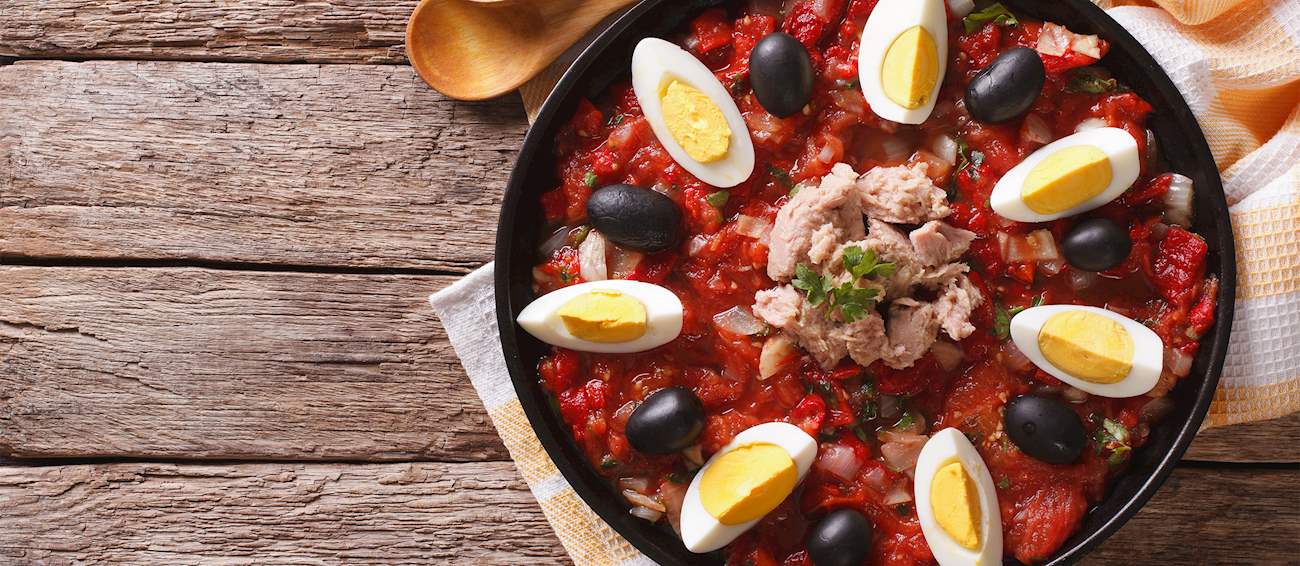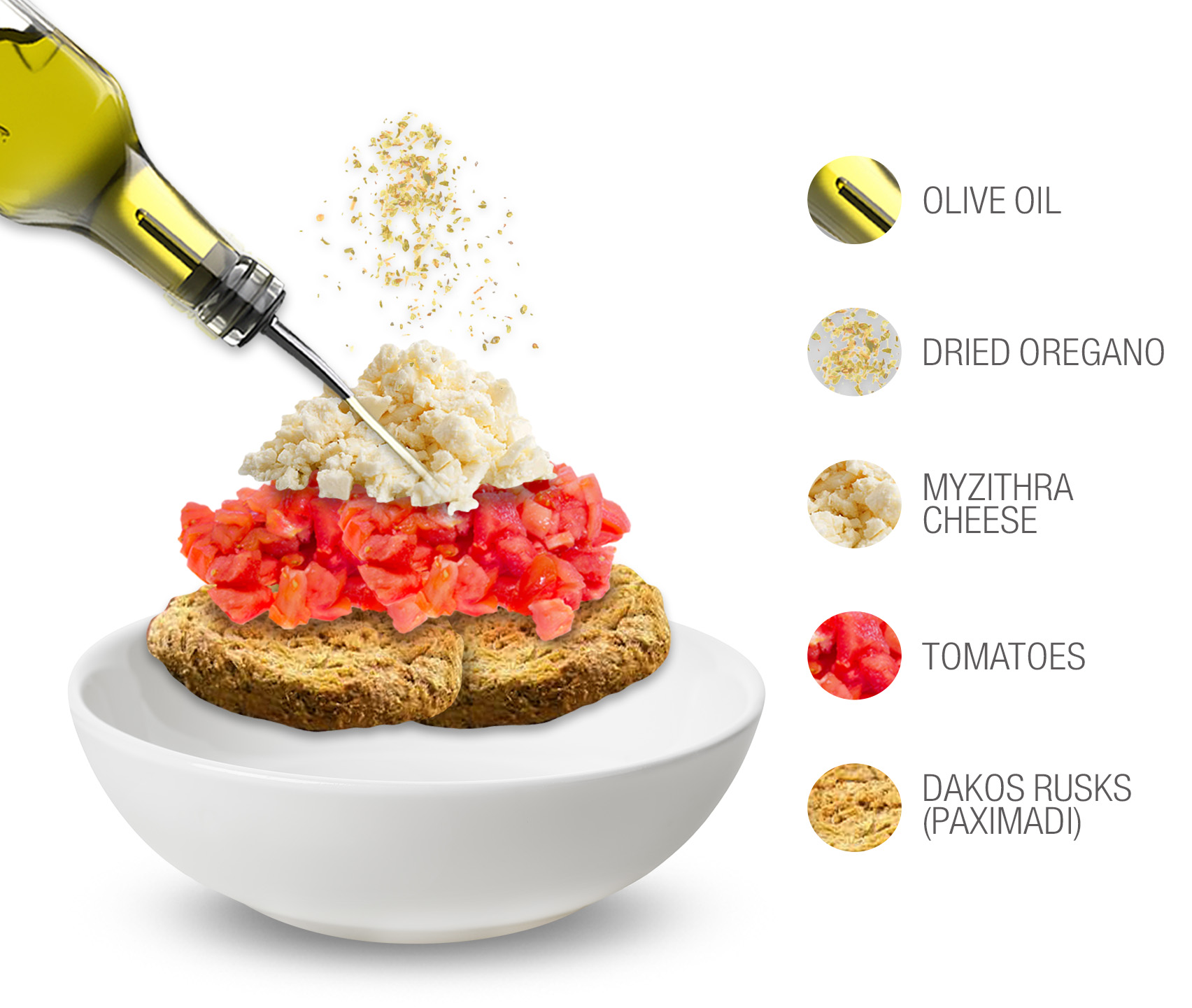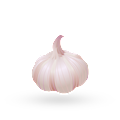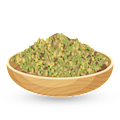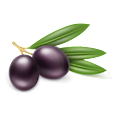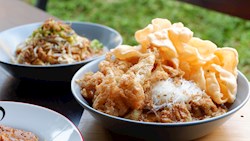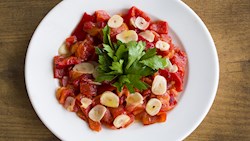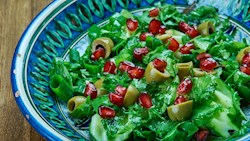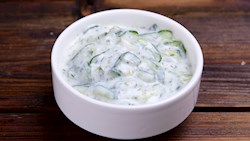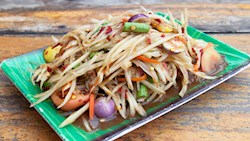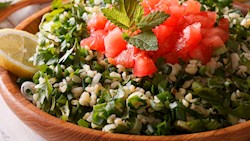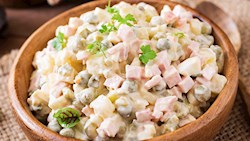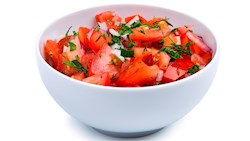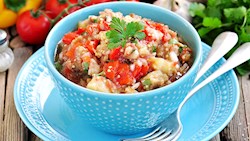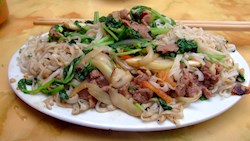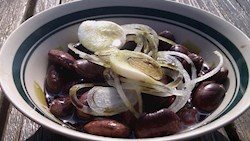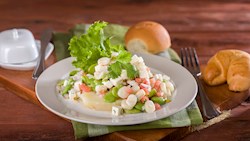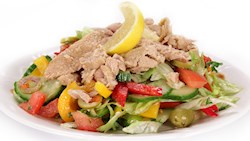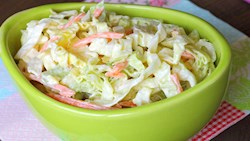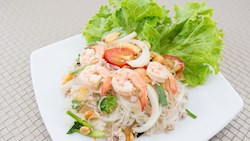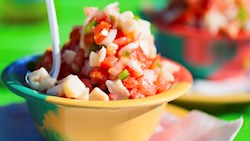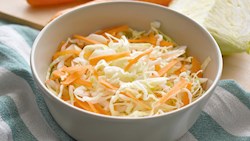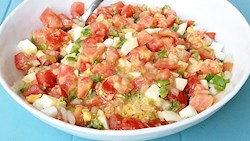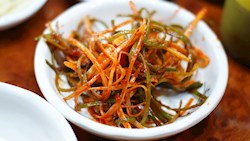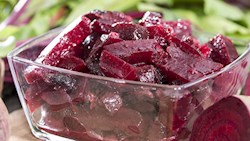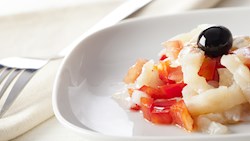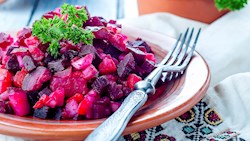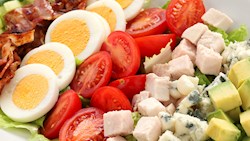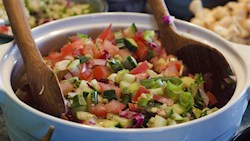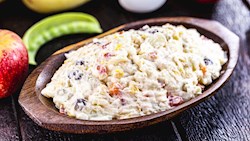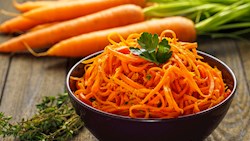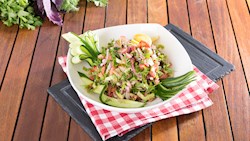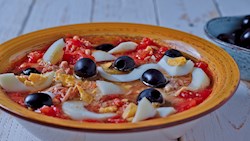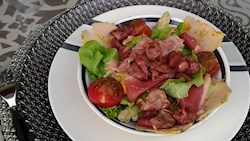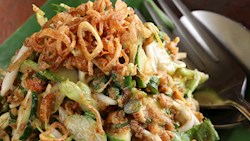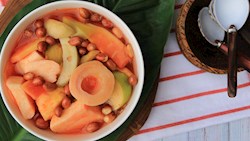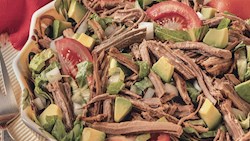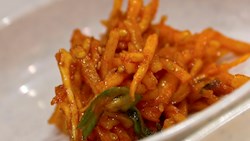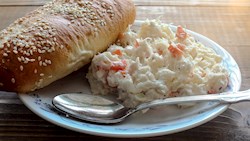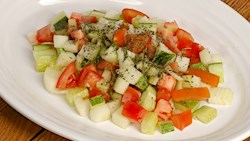Dakos or ntakos is a traditional Cretan dish consisting of a dry barley rusk called paximadi that is topped with crumbled myzithra cheese, chopped ripe tomatoes, whole olives, capers, fresh oregano, and a few generous splashes of high-quality olive oil.
It's recommended to use olive varieties such as Koroneiki, Lianes, or Tsounates. Myzithra cheese is traditionally used, and not feta, which is usually reserved for tourist restaurants. The rusk is often gently rubbed with a small piece of garlic and lightly sprinkled with sea salt.
Mechouia is a Tunisian salad made with grilled, coarsely chopped onions, peppers, tomatoes, and garlic, drizzled with olive oil and seasoned with caraway, salt, and black pepper. The salad is then typically garnished with hard-boiled eggs, olives, or tuna.
The salad can be served on its own, but it is also often served on toasted bread or baguette slices. It is quite common to find it in Tunisia as a part of a mix of appetizers in traditional restaurants.
MAIN INGREDIENTS
Greek salad, also known as village salad or horiatiki is the national dish of Greece, consisting of quartered tomatoes, sliced red onions, and chunky slices of cucumber. Depending on the region, there can also be olives, green peppers, feta cheese, oregano, salt, pepper, or a typical dressing made from olive oil and lemon or vinegar (optionally).
When feta cheese is present in the salad, it is usually just sliced, but in some cases it's mixed in with a fork until slightly crumbled. Its name suggests that it was a rural dish, when farmers would take some essential ingredients to the field and mix them together.
MOST ICONIC Horiatiki salata
View moreMAIN INGREDIENTS
Ovcharska salata is a simple variation of the famous Shopska salata. Essentially, it is Shopska salata (cucumbers, tomatoes, onions, peppers, and cheese) with the addition of mushrooms, eggs, and ham. The salad is typically tossed with vegetable oil, left to rest for a few minutes, and it is then ready for consumption.
It is especially popular in summer due to its refreshing flavors and the usage of seasonal vegetables.
Houria is a Tunisian salad made with carrots, harissa, garlic, vinegar, olive oil, caraway seeds, and salt. The salad is inexpensive and very easy to prepare. The carrots should be boiled and then lightly smashed into a purée. The purée is then combined with all other ingredients, and the salad is typically garnished with finely chopped parsley on top.
However, there are many versions of this dish, so it is not uncommon to see hard-boiled eggs, olives, crumbled feta cheese, or coriander in the salad, which is typically served as a side dish, but it can also be consumed on its own.
MAIN INGREDIENTS
Nothing embodies the essence of summer in southern Italy like vibrant colors of the flavorful insalata Caprese, a true classic of Neapolitan cuisine. The perfect combination of ripe, sun-kissed tomatoes, creamy mozzarella and fresh basil - this simple salad is believed to have originated on the island of Capri, hence the name.
Caprese was originally made with the Re Umberto or Fiascone tomatoes, traditionally grown along the beautiful Amalfi coast, and treccia di Sorrento, a type of braided mozzarella cheese. Also, contrary to popular practice, the authentic Caprese salad recipe doesn't call for balsamic or any other type of vinegar.
MOST ICONIC Caprese Salad
View moreMAIN INGREDIENTS
Fattoush is a simple salad made with traditional pita bread as a base on which the rest of the ingredients are built on. Pita bread is torn or cut into small bite-sized pieces, then toasted, grilled, or fried. It is then mixed with a variety of vegetables such as lettuce, radish, crunchy cucumbers, cherry tomatoes or regular tomatoes, peppers, onions, and (occasionally) garlic.
All ingredients are chopped and cut into pieces and mixed with a generous amount of herbs, most commonly mint and parsley. The final touch to this authentic salad is the dressing, usually made with olive oil, lemon juice, and pomegranate syrup. The key ingredient, next to the crunchy pita bread, is sumac - a spice commonly used in the Levantine area.
MOST ICONIC Fattoush
View moreMAIN INGREDIENTS
Šopska salata is a traditional cold salad that is also one of the national dishes of Bulgaria. Often served during summer, when one can find it in most Bulgarian restaurants, the salad consists of chopped tomatoes, cucumbers, onions, roasted or raw peppers, and Bulgarian cheese.
It was originally created in the 1950s, when Bulgarian top chefs were asked to create dishes that would attract tourists to the country. The vegetables are typically salted, drizzled with sunflower oil, and sprinkled with grated Bulgarian sirene cheese on top.
MOST ICONIC Shopska salata
View moreMAIN INGREDIENTS
Indonesian pecel may refer to a fragrant peanut sauce or a combination of the sauce and various vegetables, when it is commonly referred to as a salad. The base of the sauce is prepared with roasted peanuts and spices that typically include chili peppers, palm sugar, garlic, tamarind juice, shrimp paste, kaffir lime leaves, salt, and kencur, an aromatic ginger variety.
Usually associated with Java, the sauce is characterized by its distinctive combination of sweet and spicy flavors. When served with rice, the dish goes under the name nasi pecel.
MOST ICONIC Pecel
View moreMAIN INGREDIENTS
Smacked cucumber is a traditional Asian dish that’s especially popular in Tibet as a snack for picnicking. The dish is usually made with a combination of cucumbers, garlic, sesame oil, black vinegar, and soy sauce. The cucumber is peeled and smacked with a rolling pin so that it’s bruised and starting to break apart.
It’s sliced into chunks and mixed with the rest of the ingredients. The ingredients are tossed well and then served on a large plate. The cucumber is smacked because it will absorb the flavors of garlic, oil, vinegar, and soy sauce even better and it will have a more intense flavor.
TasteAtlas food rankings are based on the ratings of the TasteAtlas audience, with a series of mechanisms that recognize real users and that ignore bot, nationalist or local patriotic ratings, and give additional value to the ratings of users that the system recognizes as knowledgeable. For the “Top 100 Salads in the World” list until February 13, 2025, 16,367 ratings were recorded, of which 8,915 were recognized by the system as legitimate. TasteAtlas Rankings should not be seen as the final global conclusion about food. Their purpose is to promote excellent local foods, instill pride in traditional dishes, and arouse curiosity about dishes you haven’t tried.
